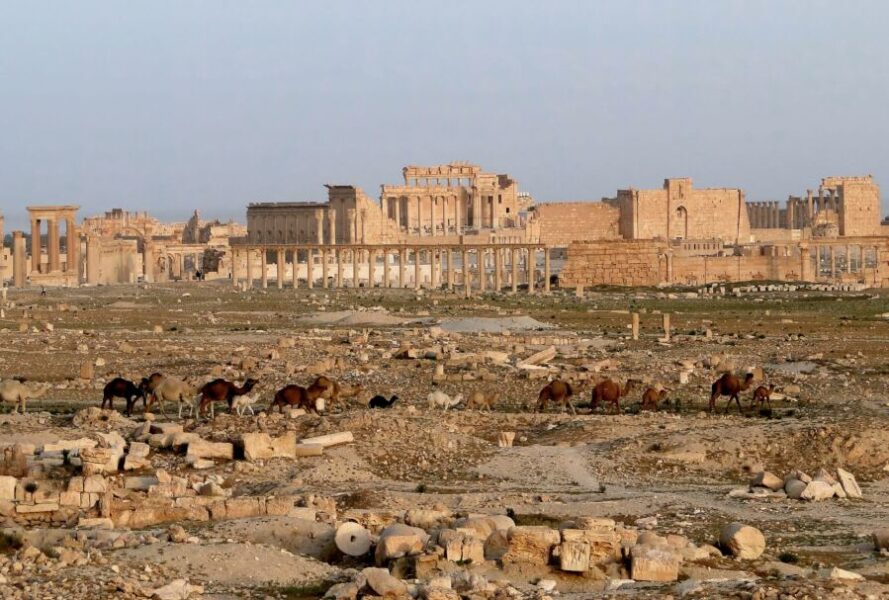A devastating new report reveals the extent of destruction in Syria’s legendary city of Palmyra, where eight out of ten buildings now lie in ruins or on the verge of collapse. The ancient oasis city, whose monuments have stood for over two millennia, has been ravaged by years of conflict, with its 2,200-year-old temples reduced to rubble and its museum’s priceless artifacts shattered.
The comprehensive field study, conducted following the liberation of Syria from the Assad regime, paints a grim picture of both the archaeological treasures and the modern city. A collaborative effort between the Spanish National Research Council’s Milà i Fontanals Institution (IMF-CSIC) and the NGO Heritage for Peace, the research documents the systematic destruction of cultural heritage that has occurred alongside a humanitarian crisis that has displaced 90% of Palmyra’s population.
“We want to raise awareness among both local communities and the international community about the serious threats facing Palmyra’s heritage,” says Isber Sabrine, a CSIC archaeologist of Syrian origin and one of the report’s coordinators.
The assessment, covering approximately 12 square kilometers, reveals the scale of devastation across Palmyra’s most significant monuments. The iconic Tetrapylon, a grand second-century structure featuring four clusters of columns, has been reduced to scattered stone fragments by explosions. Perhaps most shocking is the complete destruction of the BaalShamin Temple, an architectural marvel that had survived since antiquity until recent conflicts.
Even the city’s famous Roman theater hasn’t escaped damage. Researchers documented a collapsed façade from bombing and evidence of illegal excavations. The Palmyra Archaeological Museum, once home to irreplaceable artifacts, now stands badly damaged from aerial bombardment, its precious collections of statuary and funerary artifacts largely destroyed.
The city’s natural heritage has suffered equally devastating losses. The Efqa Oasis, spanning 400 hectares, was burned in 2020 fires. Today, surviving palm and olive tree owners struggle to salvage what remains of their orchards in areas where water access has been cut off.
The human toll parallels the physical destruction. Of Palmyra’s pre-conflict population of 100,000, only about 10,000 residents have returned to a city where basic services are virtually nonexistent. The few who have come back face severe poverty and the constant danger of unexploded ordnance, with landmines and weapons scattered throughout the area.
A small team of dedicated individuals continues to protect what remains. The Archaeological Museum, though non-operational, is guarded by personnel from the Directorate of Antiquities and local volunteers, working without support from the new administration.
The report emphasizes that Palmyra’s cultural preservation is inextricably linked to its humanitarian recovery. “Without housing, essential services and economic opportunities, the return of the population will be limited, making it difficult for local professionals and workers to be available for heritage conservation,” notes Sabrine.
The study drew on observations from 15 contributors, including Palmyra citizens, archaeologists, and returning refugees, coordinated by archaeologists Hasan Ali and Mohammed Fares of the Palmyrene Voices initiative. Their findings trace the city’s struggles through multiple periods of conflict, including the Islamic State occupation and years of repression.
Looking forward, the report calls for urgent action to implement rehabilitation strategies for both the archaeological site and the modern city. The joint effort between IMF-CSIC and the Palmyra Voices Initiative represents a crucial step toward preserving this UNESCO World Heritage site, which was first inscribed in 1980, and supporting Syria’s post-conflict reconstruction.
For Palmyra to regain its former vitality and protect its remaining heritage, the researchers conclude that rebuilding basic infrastructure must take precedence. Only by restoring the city’s livable spaces can its ancient wonders hope to be preserved for future generations.
If our reporting has informed or inspired you, please consider making a donation. Every contribution, no matter the size, empowers us to continue delivering accurate, engaging, and trustworthy science and medical news. Independent journalism requires time, effort, and resources—your support ensures we can keep uncovering the stories that matter most to you.
Join us in making knowledge accessible and impactful. Thank you for standing with us!

